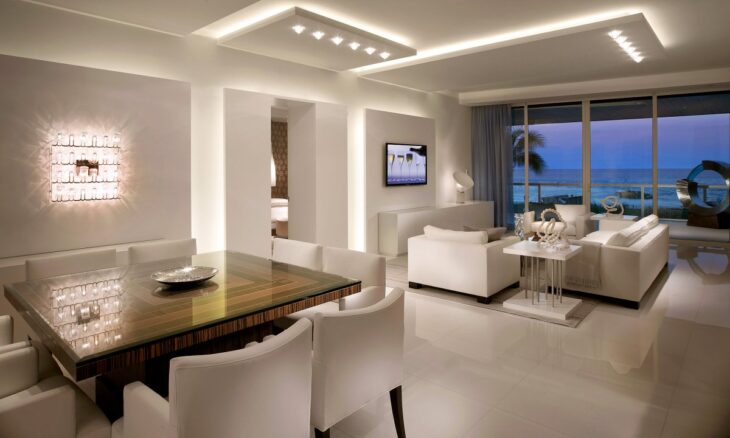
Which Led Lights Are Best for Home?
Choosing the right light bulb can be a tricky endeavour – despite initial impression, you can’t simply use the same type of bulbs in every room. Especially if you want your home to look good while keeping the lighting practical. Fortunately, LED light bulbs come in great variety, which makes them quite versatile. They’ll work great in any room (while being incredibly energy-efficient), granted you choose the right ones from the functionality standpoint. before you let us walk you through the basics of choosing the right LED lighting for all parts of your home, we would like to suggest you to visit www.brightlightz.co.uk
Why does choosing the right light source matter?
It’s quite simple – the light’s temperature has varied effects on our bodies. This applies to both natural and artificial lights. What are those effects? Bluish light (closely resembling daylight) heightens the production of serotonin – the hormone that helps us focus, stay awake and alerted. A warmer, yellow light has the opposite effect – we feel drowsy and relaxed due to boosted melatonin levels. So you should plan accordingly while choosing the lighting for a specific room. For example, putting bright lights with high colour temperature (which gives them that distinctive blue look) in bedrooms or other relaxation zones won’t be a good idea.
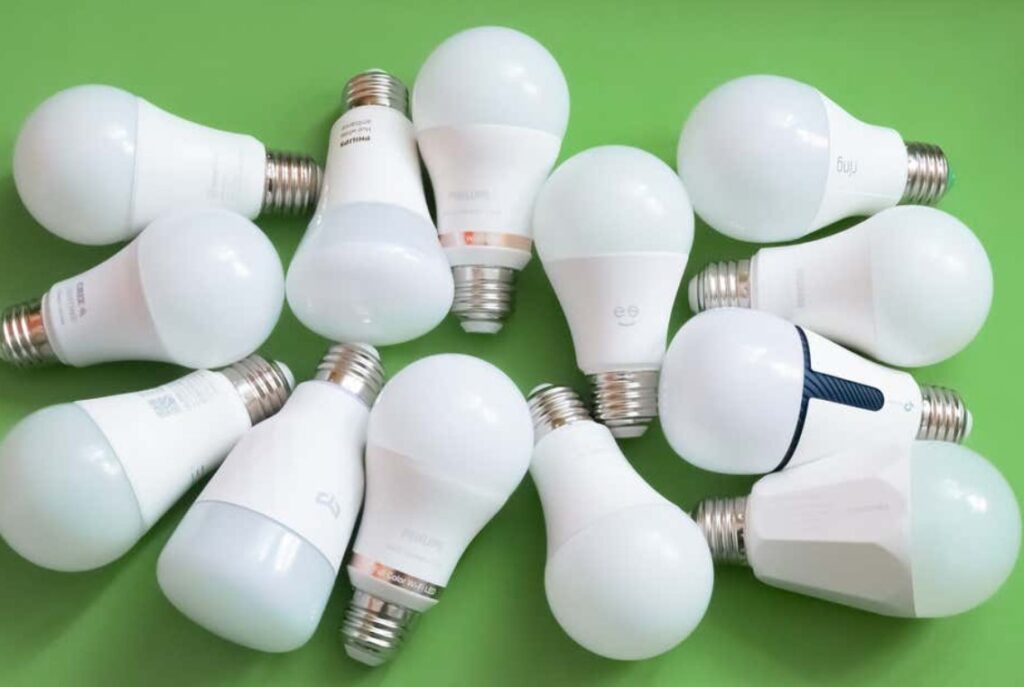
How to illuminate different rooms?
As we mentioned above, the main parameters to consider while choosing LED bulbs (and any others for that matter) are brightness and colour temperature.
Brightness is measured in Lumens (not in Watts as traditional incandescent bulbs got us used to) and is rather self-explanatory. The colour temperature (CT) on the other hand might be tricky, especially if you haven’t considered it before. It’s measured in Kelvins and determines the light’s appearance. Contrary to the first impression (and maybe logic), the higher the temperatures, the colder the lights will look. For example, bulbs with CT of 6000 K produce cold-white light similar to daylight, while those with CT below 3000 K have a distinctive yellowish hue to them.
Having that taken care of, let’s dive into choosing the best LED lighting for a given room. You can find a wide variety of LED bulbs and lamps for your house at https://lucasled.ie/.
Dining room
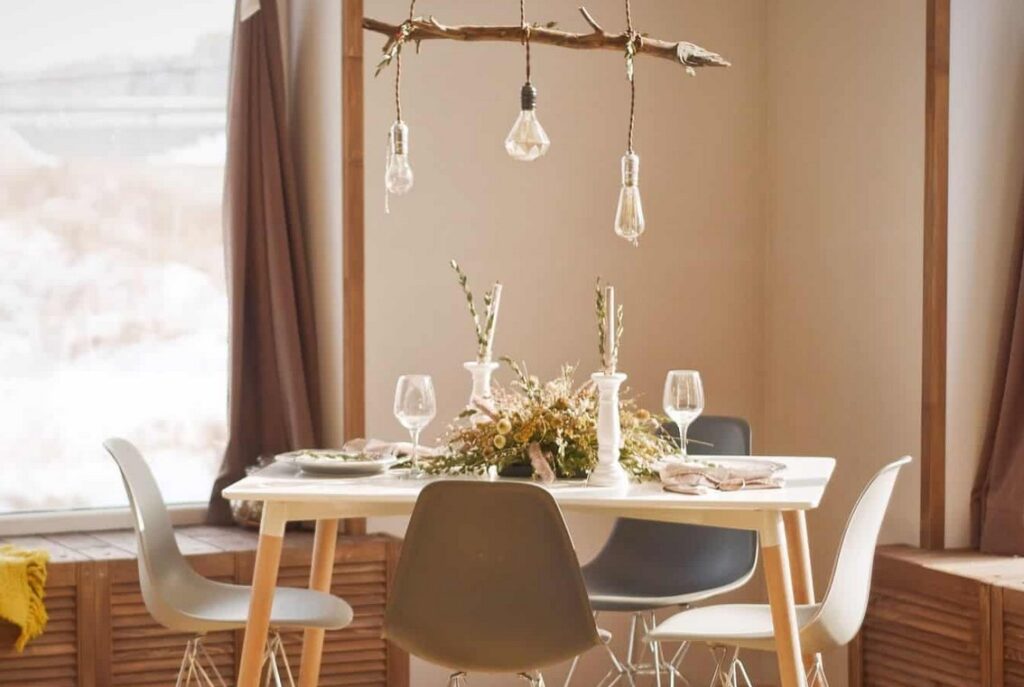
The light in dining rooms should be kept at moderate brightness – enough to keep you awake while eating but allowing a healthy dose of relaxation. This means you should use neutral or slightly soft lighting. Light bulbs with dimming options would be ideal here, as they can be adjusted on the fly.
As for the positioning of light sources, the best solution would be direct, overhead lighting above the table’s surface. A chandelier or pendant lamps are best suited for this task. You might consider wall-mounted fixtures, if the dining area is multi-purpose. The total brightness shouldn’t go below 3 000 or above 6 000 Lumens. CT should be kept at 2 200-3 000 K.
Kitchen
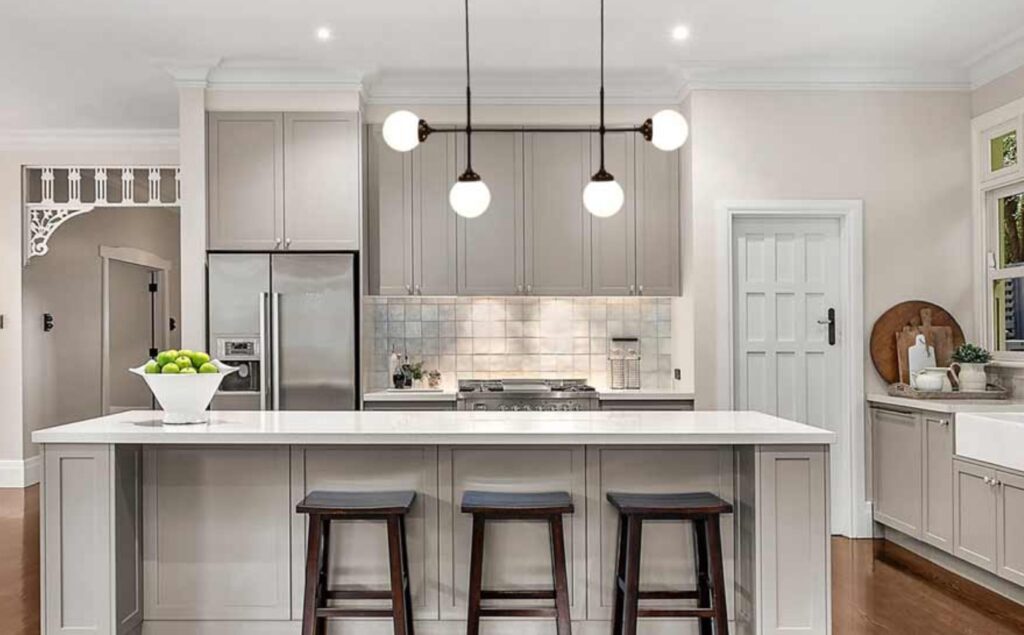
In its essence, the kitchen is a workspace. This means it should be brightly lit with cold lighting, especially around the counters. If the kitchen doubles as a dining room, make sure to keep the overhead light above the table warmer to balance out the coldness of the workspace. Kitchens are great places for retrofit kits and recessed overhead lights utilizing LED BR bulbs. The overall CT should fit between 2 700 and 5 000 K with a maximum of 4 000-8 000 lm.
Living room
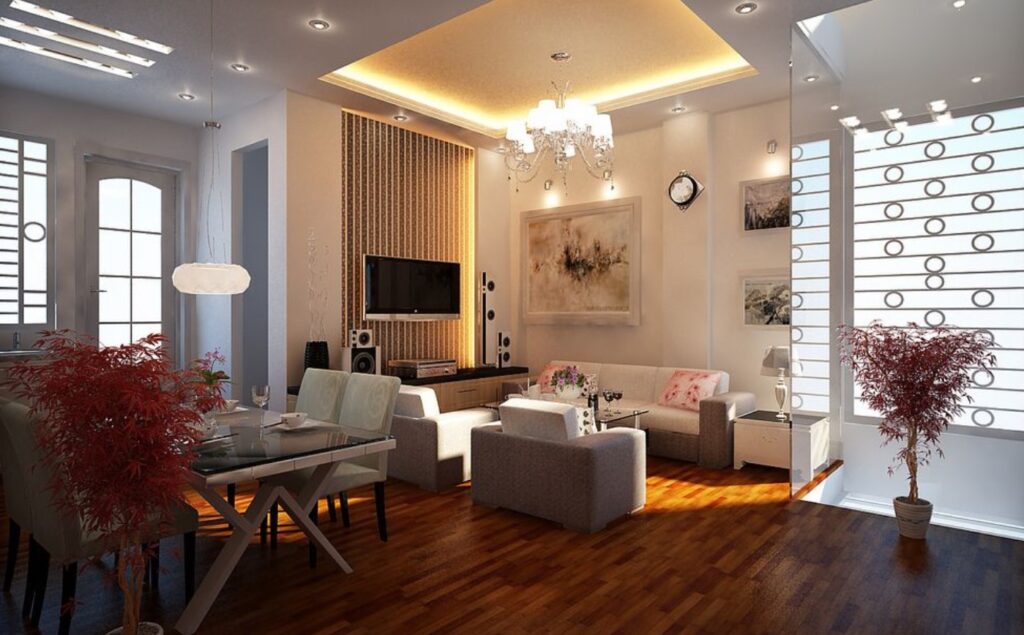
Living rooms are the main points of many homes. Due to their multi-purpose nature, they should be equipped with a variety of light sources, allowing them to be easily fitted for all possible occasions. Just keep in mind that the atmosphere should be rather relaxing – avoid cold and overly bright lights. You shouldn’t go past 2 200-3 000 K and 1 500-3 000 lm.
A popular, and practical, option is setting up LED lighting based on adjustable spotlight lamps. They can be aimed in different directions, allowing you to highlight different features, best suited for a given purpose. Adding relay switch to the mix and everything becomes smarter and even more interesting.
Bedroom
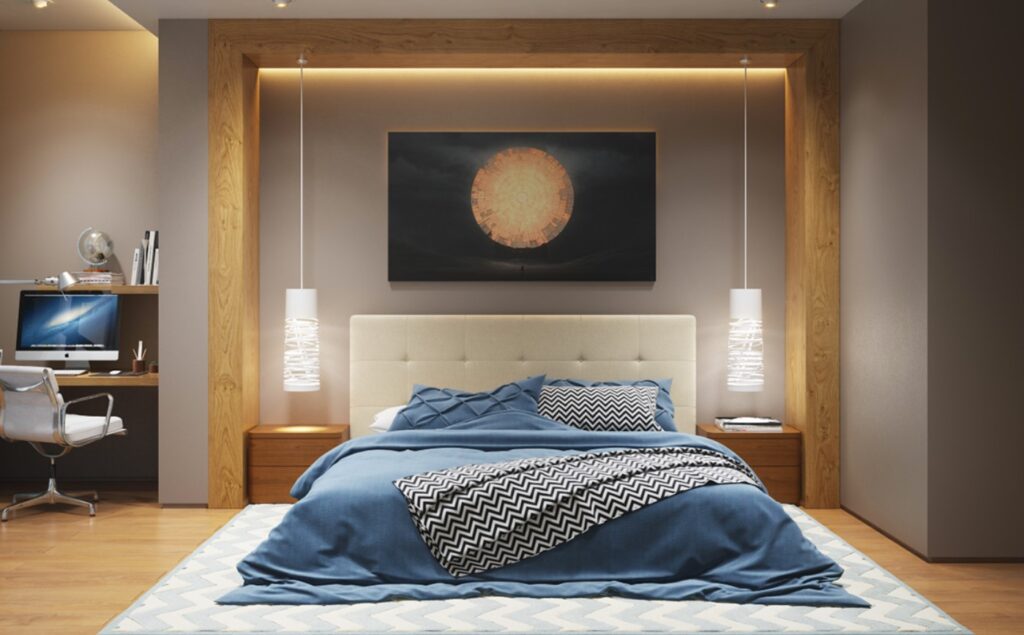
Bedrooms should be the most calming, relaxing and peaceful points of the house. Therefore, it’s not a place for cold, overly bright light fixtures – this type of light source is a real destroyer of decent sleep schedules. If you’re a bedtime reader, remember to keep your night table lamps in neutral or very soft blue light tones. This will prevent them from creating high contrast with the book’s pages and disrupting the room’s atmosphere. If you keep a dressing cabinet in, remember to provide it with its own, brighter light source. Optimal total brightness for bedrooms would be 1 500-4 000 K while keeping it nice and warm with CT of 2 700-3 000 K.
Study/home office/workshop

These rooms require high light output with rather high CT – the goal here is to keep your serotonin levels high and maximize productivity. Halogen bulbs placed overhead might be a good idea – LED ones consume far less energy while being very bright. They’ll help you stay focused and will draw all the details, which is especially important in handicraft or other precise manual activities. Every light bulb should be placed in such a way that it doesn’t produce unwanted glares on screens and other reflective surfaces. For some additional task lighting, try a LED desk lamp (or several of them) with a CT-adjustable bulb. Recommended total stats – 3 000-5 000 K and 3 000-6 000 lm.
Bathroom
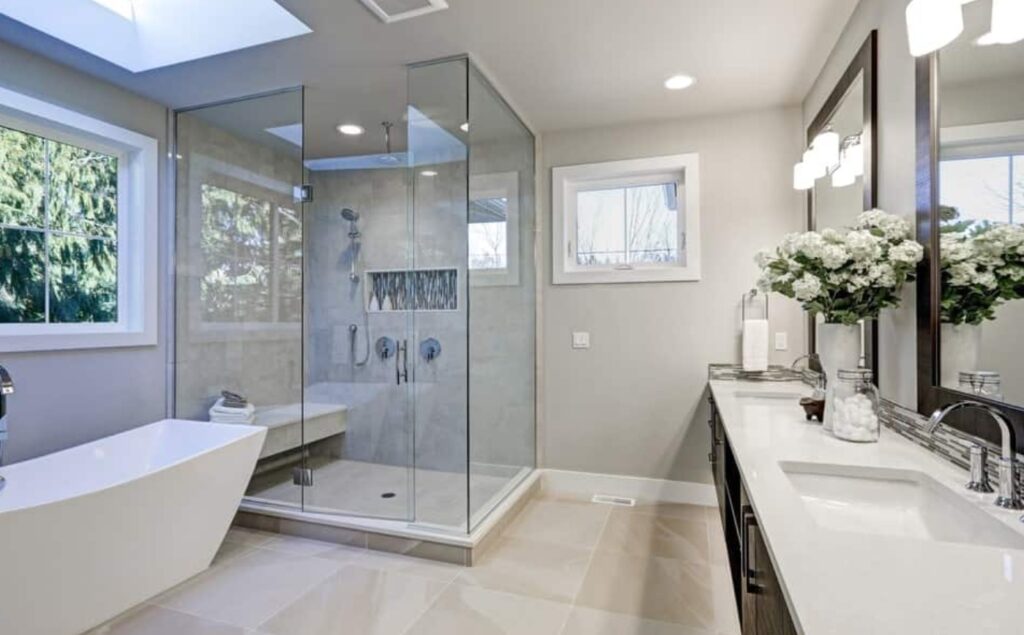
Bathrooms should be on the brighter side but rather not illuminated by a single, overhead light – the effects are way better, if you only focus on specific points of interest. For example, shower fixtures and mirrors should have their own light sources. To help you wake up while taking a morning shower, consider using a surface mounted retrofit kit with a high-output bulb. Mirrors and their surroundings can be illuminated by large globular bulbs or dedicated LED light fixtures. Total CT should be about 3 000-5 000 K with 4 000-8 000 lm.
LED light bulbs – energy-saving light sources for all kinds of rooms
By today there’s no denying that LED-based lights are in the top when it comes to quality/cost ratio. Recent years have brought us some truly magnificent advancements in this technology – we can even buy LEDs with output of 100 Lumens per Watt. Which is crazy high compared to e.g., CFLs (Compact Fluorescent Lights) that don’t go past 12 lm/W. Switching to more energy-efficient bulbs will save us a lot of money, despite their higher buying price, and can create a truly eco and smart home.